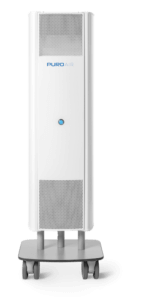Pathogen Control Solutions: Safeguarding Health through Innovative Technologies
In an era marked by global health challenges and increasing awareness of infectious diseases, effective pathogen control solutions are essential to maintaining safe and hygienic environments. This article explores various technologies and strategies aimed at preventing the spread of pathogens in different settings, from healthcare facilities to public spaces and beyond.
Importance of Pathogen Control
Pathogens, including bacteria, viruses, fungi, and parasites, pose significant risks to human health. They can cause a wide range of illnesses, from mild infections to life-threatening diseases. Controlling the spread of pathogens is crucial for preventing outbreaks, reducing healthcare costs, and enhancing public health outcomes.
Technologies and Strategies for Pathogen Control
-
Hand Hygiene: Proper handwashing with soap and water, or the use of alcohol-based hand sanitizers, is one of the simplest yet most effective ways to prevent the transmission of pathogens. Regular hand hygiene is essential for healthcare workers, caregivers, and the general public.
-
Surface Disinfection: Cleaning and disinfecting surfaces regularly can help eliminate pathogens that may linger on commonly touched objects and surfaces. Use of EPA-approved disinfectants and following manufacturer guidelines is critical for effective disinfection.
-
Personal Protective Equipment (PPE): PPE, such as masks, gloves, gowns, and face shields, serves as a barrier against pathogens, particularly in healthcare settings where direct contact with patients or contaminated materials is common.
-
Air Purification: Air purifiers equipped with HEPA filters, UV-C light, or other technologies can remove airborne pathogens and allergens, improving indoor air quality and reducing the risk of respiratory infections.
-
Germicidal Lighting: UV-C and antimicrobial lighting systems can disinfect air, water, and surfaces by killing or inactivating microorganisms, thereby reducing the transmission of infections in various environments.
-
Water Treatment: Advanced water treatment technologies, including UV disinfection, filtration, and chlorination, ensure that drinking water and wastewater are free from harmful pathogens and contaminants.
-
Vaccination Programs: Vaccines are critical for preventing the spread of vaccine-preventable diseases (e.g., measles, influenza, COVID-19) and achieving herd immunity within communities.
-
Environmental Controls: Proper ventilation, humidity control, and maintaining clean environments play key roles in reducing the survival and spread of pathogens in buildings and public spaces.
Benefits of Effective Pathogen Control Solutions
-
Reduced Transmission: Implementing robust pathogen control measures can significantly reduce the transmission of infectious diseases within communities, workplaces, and healthcare settings.
-
Improved Public Health: By preventing outbreaks and reducing the burden of illness, effective pathogen control solutions contribute to improved overall public health and well-being.
-
Cost Savings: Investing in pathogen control early can lead to substantial cost savings by reducing healthcare expenditures associated with treating preventable infections and outbreaks.
-
Enhanced Safety: Providing safe and hygienic environments instills confidence among individuals, whether in healthcare facilities, schools, workplaces, or public spaces.
Challenges and Considerations
While pathogen control solutions offer numerous benefits, several challenges and considerations must be addressed:
-
Resistance: Pathogens can develop resistance to disinfectants, antimicrobial agents, and antibiotics, necessitating ongoing research and development of new control strategies.
-
Resource Allocation: Adequate funding, resources, and infrastructure are essential for implementing and sustaining effective pathogen control measures, especially in resource-limited settings.
-
Education and Compliance: Public education and awareness campaigns are crucial for promoting adherence to hygiene practices, vaccination programs, and other preventive measures.
-
Environmental Impact: Some disinfectants and antimicrobial agents may have environmental implications, such as toxicity or persistence in ecosystems, requiring careful consideration and management.
Conclusion
Effective pathogen control solutions are integral to safeguarding public health and mitigating the spread of infectious diseases. By employing a combination of technologies, strategies, and behavioral practices, communities, healthcare providers, and individuals can create safer environments and reduce the impact of pathogens on global health. Continued research, innovation, and collaboration across sectors are essential to addressing current and emerging challenges in pathogen control, ensuring a healthier future for all.

By using this site you agree to this Privacy Policy. Learn how to clear cookies here
Michel Guerard, l'inimitabile genio della cucina francese The Windsor at Hebron Park REAL OVIEDO - CARTAGENA Vaccin, o speranță pentru zile mai bune IFN: Ce este, cum funcționează și importanța sa MAMA 2024: Isang Gabing Hindi Malilimutan FB88 Trang Chủ Hàng Đầu Châu Á Học viện đào tạo thẩm mỹ Mega Academy ปารากวัย พบ บราซิล